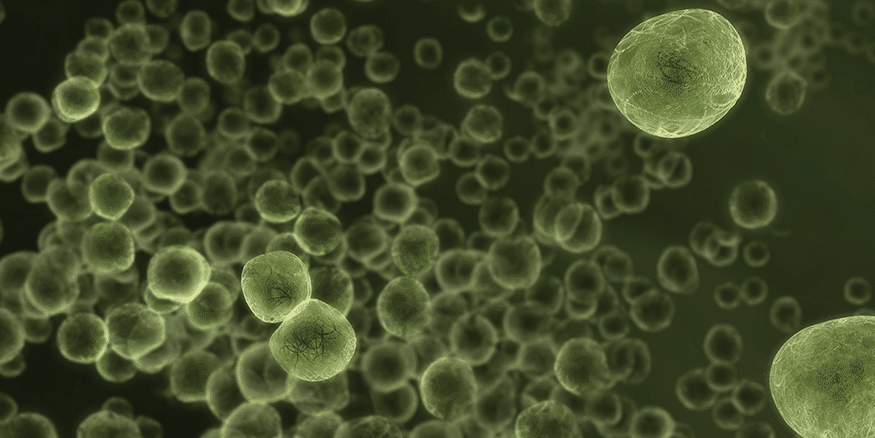
Intestinal Microbes & Prebiotics at a Glance
What are microbes?
Microbes, short for microorganisms, are microscopic, living organisms such as bacteria, viruses, and yeast. There are more than 400 species of microbes in the digestive tract.
What do microbes do in the colon?
There are two basic bacterial cell types in the digestive tract: beneficial bacteria (non-pathogenic), including bifidobacteria and lactobacilli and disease causing bacteria (pathogenic), including Escherichia coli and Clostridium difficile1. Beneficial bacteria keep pathogens in check, and contribute to the prevention of infection and stimulation of the immune system. Disease causing bacteria release proteins and toxic by-products, which can cause infection and diarrhea1. Microbes compete with each other for food sources and adhesion sites on the intestinal mucosa, which are both necessary for their growth.
The balance between beneficial and harmful bacteria is important for maintaining the health of the individual. Several factors can upset this balance, including diet, stress, and medications, particularly antibiotics. Adding prebiotics and probiotics to the diet changes the microbial population and their activity, fortifying the number of good bacteria in the gut.
What are prebiotics?
A prebiotic is defined as “a non-digestible food ingredient that beneficially affects the host by selectively stimulating the growth and/or activity of one or a limited number of bacteria, already established in the colon and thus improves host health.”2 Fructooligosaccharide (FOS) and inulin are examples of two of the most extensively studied, and perhaps the most effective, prebiotics available.
Prebiotics are characterized by the following2,3,4:
- They are the preferred substrate or food source for one or more species of beneficial bacteria in the colon. FOS and inulin are highly fermentable and are the preferred energy source for bifidobacteria.
- They stimulate the growth and activity of the beneficial bacteria in the large intestine. Inulin and FOS are called ‘bifidogenic’ as they stimulate the growth and/or activity of bifidobacteria.
- They alter the microbial balance of the colon toward a potentially more healthy composition.
Where do the prebiotics FOS & inulin come from?
Inulin and FOS are naturally found in plants such as Jerusalem artichokes, bananas, garlic, onions, tomatoes, and wheat, consisting of fructose molecules linked together. Inulin, the longer chain oligosaccharide, can be extracted from chicory root, whereas FOS, the shorter chain oligosaccharide, can be extracted from inulin or synthesized by enzymatically combining sucrose and fructose, two naturally occurring sugars1.
The average diet provides 2g to 8g FOS/day13. Eating a minimum of five servings of fruits and vegetables daily (focusing on the foods listed in the chart below) will help increase FOS consumption in the diet.
| Food13 | FOS (mg/Serving) |
| Jerusalem artichoke (½ cup) | 4,380 |
| Onion powder (1 tbsp) | 293 |
| Banana, ripe (1 medium) | 236 |
| Chicory root, raw (½ cup) | 189 |
| Shallot (1 tbsp) | 85 |
| Peach (½ cup) | 34 |
| Garlic (1 clove) | 12 |
Some beneficial health effects of prebiotics:
- Stimulate the growth of beneficial bacteria, specifically bifidobacteria1,2,5,6.
- Support an anti-diarrheal effect by preventing pathogenic bacterial colonization and increasing the concentration of beneficial bacteria in the colon1,2 .
- Enhance calcium and magnesium absorption. Prebiotics ferment in the colon, releasing short chain fatty acids which increase the absorption of minerals in the colon7,8,9. Research has shown FOS and/or inulin to increase calcium absorption by 15-20%8 and magnesium absorption by up to 12%9.
- Stimulate intestinal motility by increasing colonic movement, bowel content, and stool weight5,6,11.
- Promote populations of healthy intestinal microbes.
What the research shows
A study conducted in 10 Canadian adolescents with active Crohn’s disease used Nestlé Peptamen with Prebio1™ as their sole source of nutrition for six weeks12. Subjects tolerated the formula well and there were significant improvements in weight, height, and nutritional status. Inflammation decreased in 9 out of 10 patients. In addition, there were clinically significant increases in quality of life scores after receiving Nestlé Peptamen with Prebio™.
A randomized, double-blind controlled trial was conducted in 67 children with various forms of cancer randomly assigned to receive either Nestlé Nutren Junior with FOS or Nestlé Nutren Junior without FOS14. The children received 400ml of the formula per day for a minimum of 13 days, and optionally up to 30 days. Subjects tolerated both formulas well and at day 30, the group receiving Nutren Junior with FOS had significantly higher lactobacilli counts and trended toward higher bifidobacteria counts compared to the group receiving Nutren Junior without FOS.

